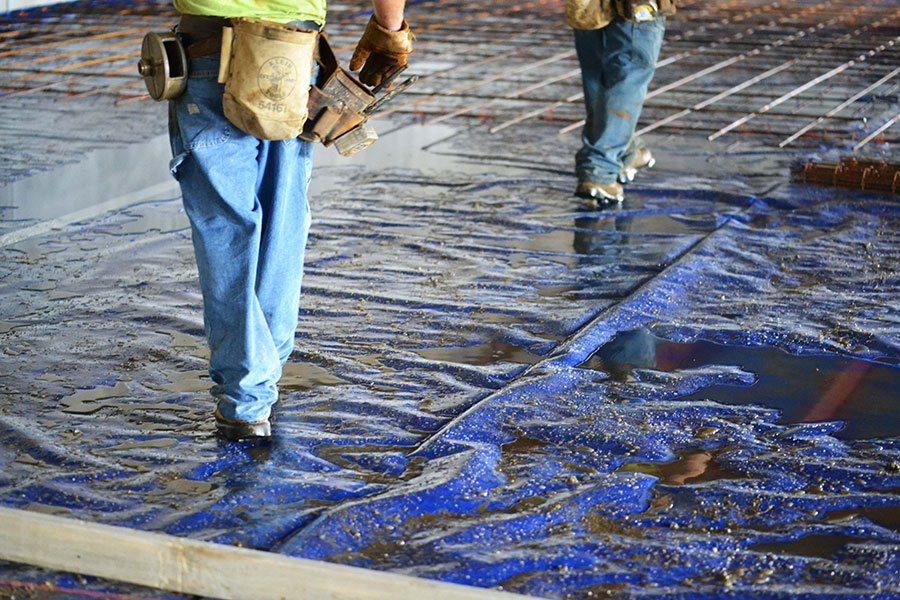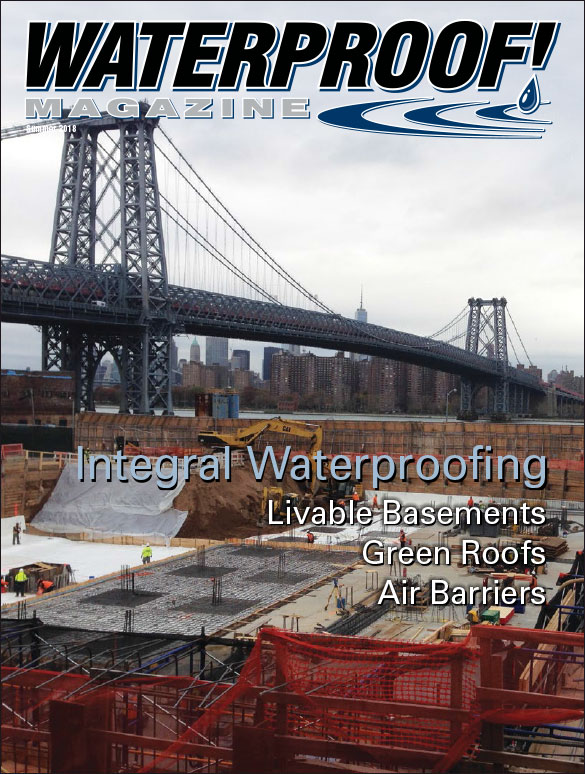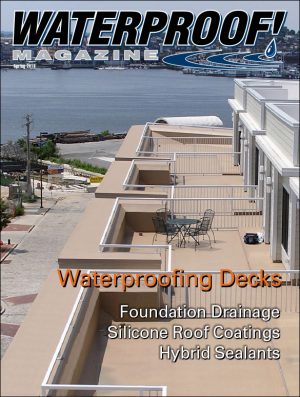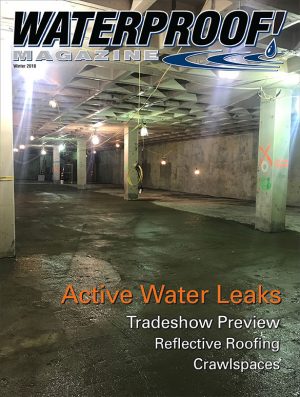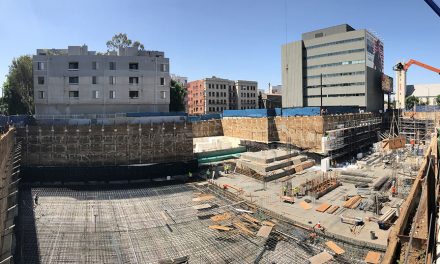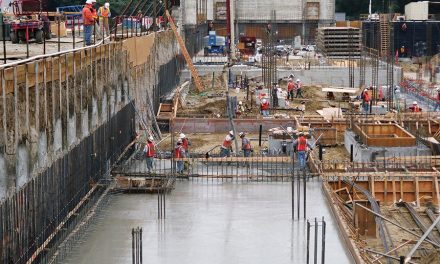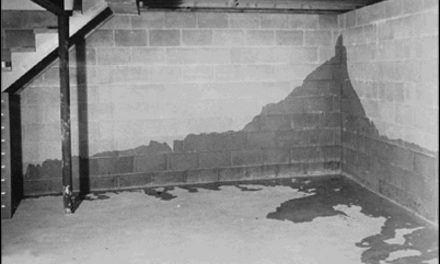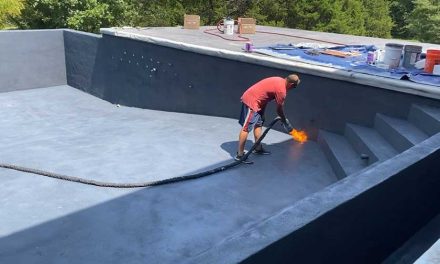Typically, below-grade waterproofing is applied after the foundation walls have been poured. However, on some projects, this is simply not possible.
In these cases, installers turn to blindside waterproofing, where the drainage and waterproofing membranes are installed before the structural concrete is placed. It’s sometimes called pre-applied waterproofing, and in this respect, it’s similar to underslab barriers, which are also installed prior to the concrete.
Blindside and underslab work require reliable, durable products, and flawless workmanship. Because they share many similarities; often the same products are used for both applications.
“Blind-side is a very difficult application to waterproof,” says Dave Polk, president of Epro Services. “You’re applying it over a soil retention system, not concrete or masonry. The problem is that you have to do your detailing against that retention system—whether that’s lagging beams, sheet pilings, or compacted native soils—instead of the concrete itself.
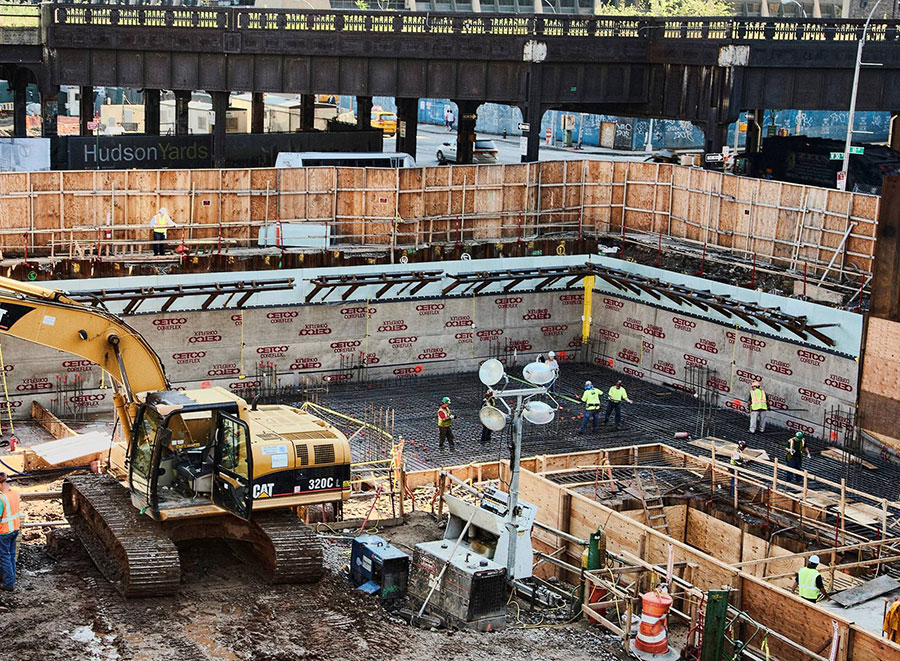
Bentonite was the perfect solution for the blindside/shotcrete foundation of this 38-story condo.
Blindside work is typically more expensive than the typical positive-side application, but sometimes it’s the easiest—or only—way to get it done. “Zero lot line” foundation walls, tunnels, and deep foundations are classic applications. Occasionally, designers may elect to use blindside and underslab waterproofing to limit excavation or to achieve “green” ratings. (The LEED rating system, for example, awards points for minimizing the excavation footprint under Sustainable Sites-Site Development.)
Despite the difficulties blindside presents, with the right materials and know-how, contractors can get a good imperm-eable below-grade structures using blindside techniques.
Bentonite Sheets
Bentonite has historically been the solution of choice, and is still popular because it has the ability to heal itself if ripped punctured, or cracked.
CETCO, the largest manufacturer of bentonite waterproofing products in the world, offers a number of solutions. Their Voltex line is popular for both vertical and horizontal blindside applications. Recently, they’ve developed Ultraseal SP, a bentonite-polymer alloy that is reportedly 10 times less permeable than traditional bentonite.
Spray Applied Membranes
Of course, bentonite sheets aren’t the only option for blindside work. Another popular option is to use a spray-applied waterproofing membrane over a dimpled drainage sheet.
Epro Waterproofing Services is one of a handful of companies that markets this type of blindside solution. “We have a system that has numerous advantages over other products out there,” says Polk. The first step is fastening EcoDrain, a dimpled sheet drain, to the retaining wall. Then, the spray-on waterproofing membrane is applied. The Epro formula, called EcoLine, will chemically bond to the concrete wall when it’s poured.
Polk says, “Really, the key to a good blindside application is the ability to detail around the soil retention system. Regardless of the system you use, the contractor must use some sort of liquid around the soldier beams, tie-backs, etc.”
A similar system is used for underslab work. In this case, the EcoLine membrane is applied first, usually on a reinforcement fabric, but sometimes over a smooth polyethylene liner if the soil is contaminated. Then a topsheet is installed and a drainage/protection course on top of that.
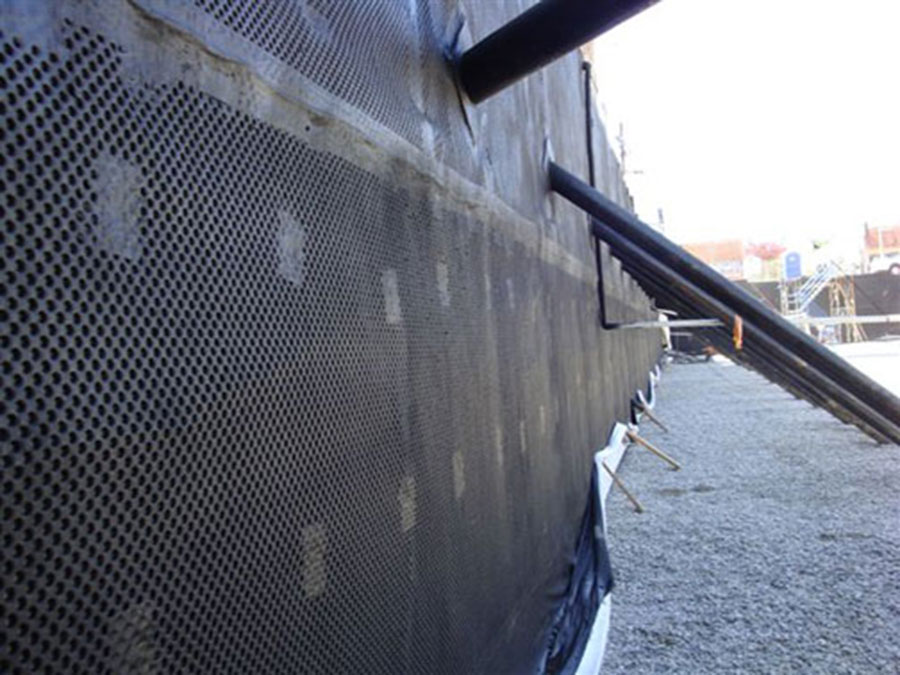
Epro’s seamless spray-applied system was used on this San Fernando valley apartment complex.
Plastic Sheet Goods
Some blind-side projects use plastic sheet goods, which use a variety of methods to ensure good adhesion between the concrete and the membrane.
Underseal Blindside from Polyguard is one such option. First, a drainage layer is fastened to the wall, and any penetrations are sealed with a liquid waterproofing compound. Finally the 73-mil Underseal product is applied. It’s actually a 4-mil thick sheet of HDPE laminated to a 56-mil layer of proprietary waterproofing compound bonded to a 13-mil nonwoven geotextile fabric.
Sheet goods are especially common for underslab work. Insulation Solutions’ Viper VaporCheck II is an example. Made of prime, virgin polyolefin resin, the multi-layer plastic extrusion process creates an impervious sheet. The manufacturing process also renders it highly resistant to tears, rips, and punctures, and the protection will last as long as the building. VaporCheck II is available in a variety of thicknesses to help designers balance cost and performance.
Integral Admixtures
Yet another approach to blindside waterproofing is using integral crystalline admixtures to make the concrete itself waterproof. This technique was used on a parking garage built for the Egleston Children’s Hospital near Atlanta, Georgia.
Rather than excavating the 80-foot deep foundation and installing shoring walls from the bottom up, this unusual project was built from the top down, five feet at a time.
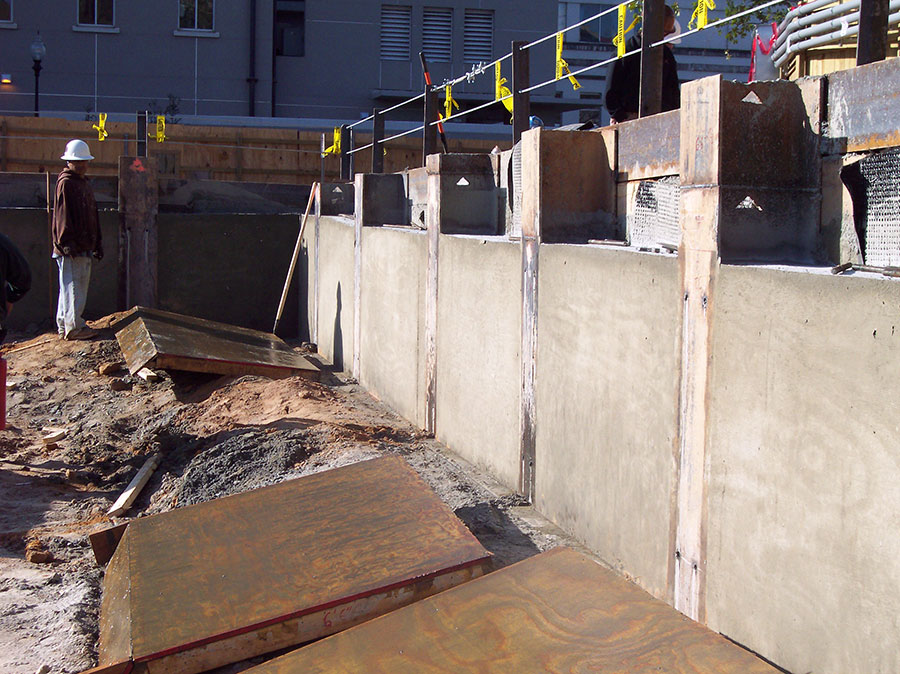
Built from the top down, the 80-foot-deep hospital excavation was waterproofed with a crystalline admixture.
Designers specified a crystalline waterproofing technology from Kryton. The Krystol system turns porous concrete into a permanent waterproof barrier by creating millions of needle-like crystals in the spaces between concrete particles. Any incoming water causes additional crystals to form, self-sealing small concrete cracks. This approach eliminates the need for external membranes, and was ideal for this unusual blind wall application.
The Egleston parking garage used 39,500 pounds of admixture to treat 3,500 cubic yards of concrete.
“The Krystol System worked great,” says Rick Anderson, president of ABE Enterprises, the shoring wall contractor. “It saved money for the owners, shortened the construction time line and … when a few minor cracks appeared in the finished concrete, they self-healed exactly as promised.”
Like the other waterproofing solutions mentioned in this story, integral crystalline admixtures can be used for underslab work, too.
Conclusions
As land-use codes become stricter, and developments become more complex, blindside and underslab waterproofing will become increasingly common. Bigger structures are being built on less desirable land. Jobsites are becoming more congested and green building mandates encourage owners to minimize excavation.
To overcome these challenges, there are a full range of products already on the market. Bentonite clays, spray-on products and sheet goods have a track record stretching back decades. Crystalline products have been specified across North America and Europe with stellar results.
Regardless of the product you choose to specify or install, working closely with the manufacturer and others on the construction team will go a long way to guarantee that the structure performs as intended for decades to come.
Summer 2018 Back Issue
$4.95
Livable Basements
AVAILABLE AS DIGITAL DOWNLOAD ONLY
Description
Description
Additional Info
Additional information
| Magazine Format | Digital Download Magazine, Print Mailed Magazine |
|---|

